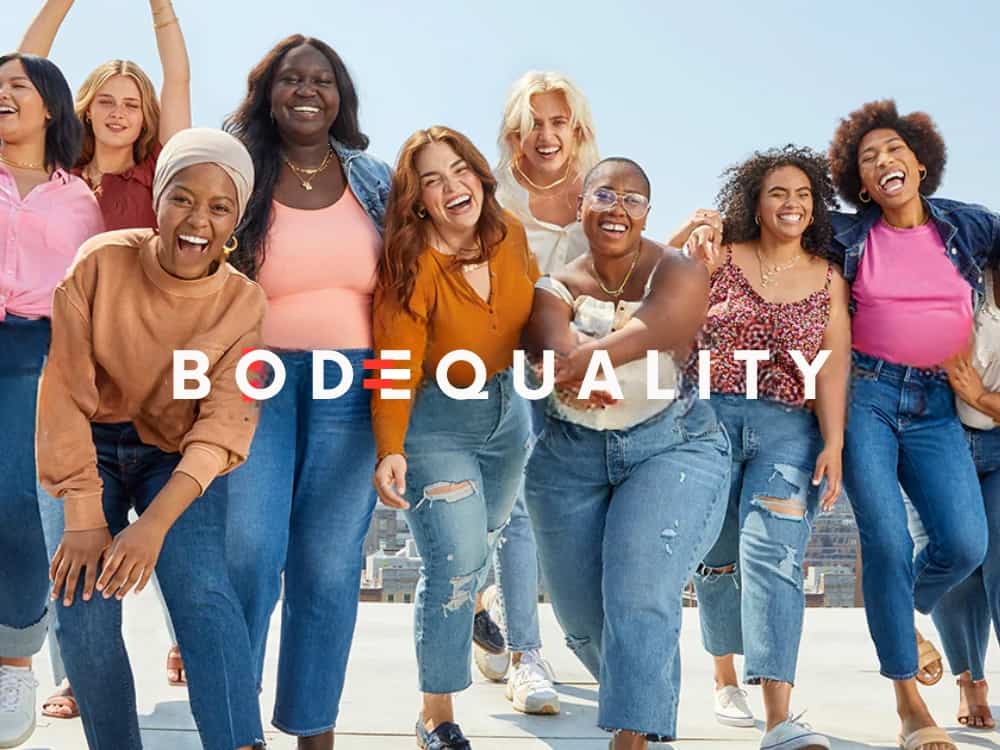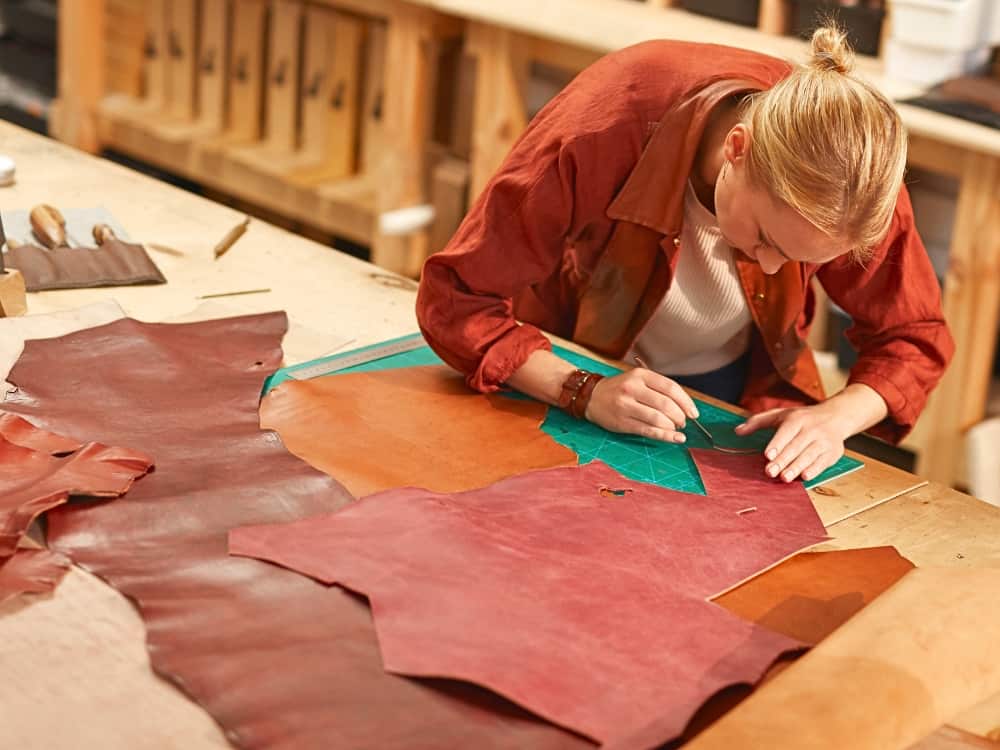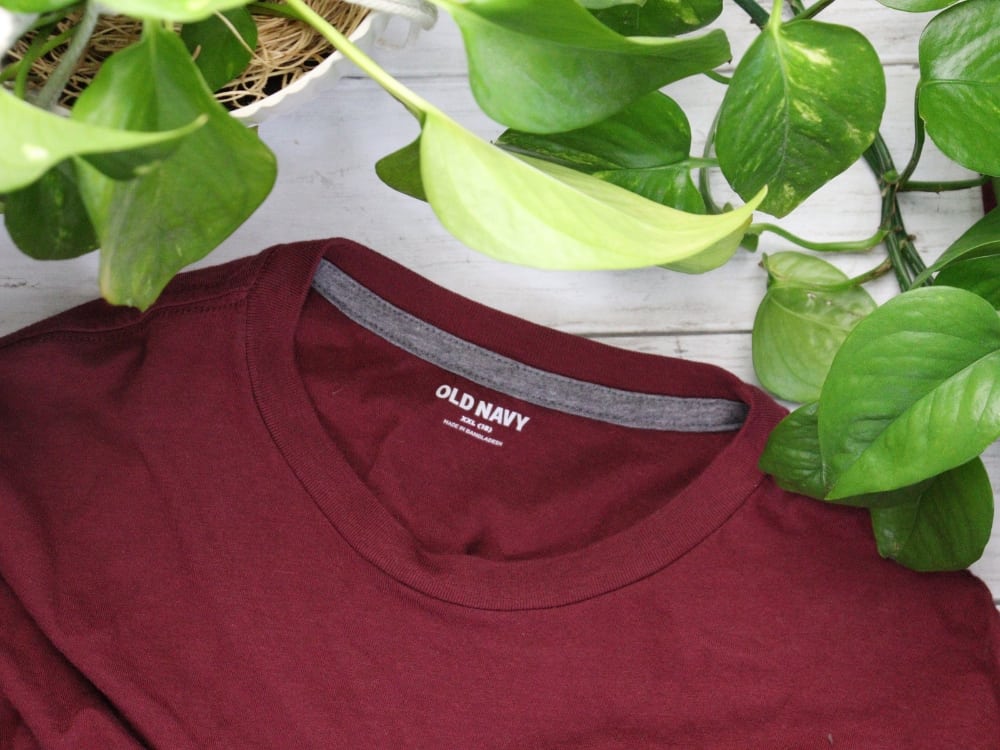
Is Old Navy Fast Fashion?
If you’ve stepped into a mall or shopping hub in the United States or Canada in the past twenty years, you’ve likely encountered Old Navy.
It’s one of the largest retailers in the United States with an oh-so-familiar warehouse aesthetic.
Old Navy is known for a vast catalog of garments for women, men, and children at incredibly low prices—hence their slogan touting their “great deals on denim”.
So, is Old Navy fast fashion?
If you’re feeling all at sea about Old Navy ethics and sustainability, join us as we take a deep dive into this popular apparel and accessories brand.
1. Uncovering Why Old Navy Is Fast Fashion

Old Navy is one of the most accessible and trendy clothing retailers in America.
The multinational corporation Gap Inc. owns the brand, along with Athleta, Banana Republic, and Gap.
In the early 1990s, Gap wanted to expand with a new division of less expensive clothing. By 1994, Old Navy Clothing was born, named by then-CEO Millard Drexler, who visited a bar in Paris with the same name.
The brand grew phenomenally, achieving $1 billion in yearly sales in less than four years. It now has over 1,000 locations and continues to be “for the whole family.”
But with its suspiciously low prices, a constant influx of new styles, and global reach, you have to wonder, is Old Navy ethical?
2. Old Navy Controversies

Despite being marketed as a family brand, Old Navy has had its fair share of drama.
Here are some of the most notable ones in its history.
Controversial Children’s Clothes
The retailer carries countless children’s apparel with various phrases and graphics, several of which didn’t land quite as intended.
Have you heard of the Old Navy onesie controversy?
In 2010, Old Navy received complaints for an onsie that read ‘Formula Powered.’ Multiple bloggers and internet personalities expressed disapproval of the apparent promotion of the formula industry and planned to boycott the retailer.
Others saw no issue with the bodysuit and questioned those who did, sparking an internet-wide debate.
In 2015, Old Navy also received pushback for releasing a girl’s tee with the phrase “Young Aspiring Artist,” with the last word crossed out and replaced by “Astronaut” and “President.”
Though it’s easy to see the intended empowerment behind the slogan, many parents believed the phrase could give children the wrong idea about careers in the arts.
Charging Plus-Size Women More
In 2014, Old Navy received backlash after customers discovered the retailer charged plus-size women more than plus-size men.
Whereas men’s items were priced the same regardless of size, Old Navy charged more for women’s plus-sized garments. Women’s plus-size jeans, for example, cost $12–$15 more than standard sizes.
This caused backlash from customers, with many claiming sexism, discrimination, and sizeism. A Change.org petition was started, which received almost 95,000 signatures.
Old Navy responded stating that the price difference reflected “the selection of unique fabrics and design elements” involved with plus-sized women’s clothing.
More Size Inclusivity Problems
Popular retailers like Old Navy (scratch that, the fashion industry on the whole) have historically struggled with size inclusivity. Old Navy sought to remedy this with its BODEQUALITY campaign.
They wanted to be the first retailer to offer sizes 0–30 and XS–4X for all women’s styles at affordable prices.
Old Navy also eliminated separate “plus-size” sections so shoppers could find all sizes in one place.
So, what’s the problem?
Unfortunately, the fine print stated that size 30 would not be available in stores. Instead, shoppers had to find this size online.
Many plus-size customers took this as a slap in the face. They found it odd that Old Navy would exclude only one size from in-store locations, and many plus-size influencers and online personalities spoke out about this controversy.
This led to a proposed class action lawsuit that ultimately never gained much ground.
What’s more, less than a year after launch, Old Navy scaled back its in-store inclusive sizing, claiming decreased demand for larger sizes.
Queer Eye Drama
Perhaps the biggest Old Navy controversy concerns the Netflix show Queer Eye.
In 2019, part of the show was filmed at an Old Navy location in Center City, Philadelphia. On filming day, three employees of color at Old Navy claimed they were told to stay out of sight while an all-white crew was brought in to take their place.
The allegations emerged when Monae Alvarado, a Cambodian woman who worked at Old Navy, posted about her experience on Facebook.
She stated she and a few other employees of color were told to stay in the back of the store and were ushered away from the cameras. Many of these employees had worked additional hours to prepare the store for filming.
This event caused outrage on social media, but representatives from Old Navy claimed this was inaccurate.
3. Old Navy Ethical Issues

In Fashion Revolution’s 2023 Fashion Transparency Index (an annual report that assesses major brands based on transparency, policies, and environmental practices), Old Navy received an overall score of 46%.
While this is better than the average of 26%, there is still much room for improvement.
Old Navy Manufacturing
Old Navy clothes are made worldwide in countries such as China, Vietnam, Turkey, Bangladesh, India, Indonesia, and Sri Lanka.
The brand isn’t very transparent, with a 2023 Fashion Transparency Index rating of 36% for supply chain traceability.
Unfortunately, while Old Navy has various policies and codes of conduct, it does not have third-party certifications that ensure worker safety, living wages, and other labor rights.
In terms of child labor, Old Navy does adhere to a strict Human Rights Policy and Code of Vendor Conduct (COVC) that requires suppliers to use age-verification processes to prevent underage workers.
However, Old Navy’s parent company, Gap Inc., has been under fire for using child labor in the past.
In 2007, an Observer investigation revealed child labor at Gap factories in India. Gap denied any knowledge of it happening and promised to investigate the facility.
Later, in 2013, a report by Al Jazeera discovered a 12-year-old girl sewing elastic into Old Navy jeans at a finishing house in Bangladesh.
Gap responded that the clothing was “counterfeit or improperly acquired”.
While the brand’s child labor policy may have prevented any events in recent years—for both Gap Inc. and Old Navy—child labor has been a problem in the past.
We would like to see third-party audits carried out by the brand to ensure supplier compliance with their policies.
Similarly, while there haven’t been any specific recent reports of Old Navy sweatshops, there have been numerous such reports involving parent company Gap, Inc.
In 1999, reports came from locations in Saipan, claiming negligent pay, forced abortions, and unsafe working conditions.
In 2013, a report exposed human rights abuses in a Bangladesh factory, including pregnant women being forced to work 100-plus hour weeks, unlawful firings, physical abuse, and poverty wages.
Without independent, third-party factory audits, we can’t be sure whether these illegal practices have ended.
Animal Welfare
Old Navy has an Animal-Derived Materials Policy and claims to be fur-free.
They don’t use angora, mohair, feathers and down plucked from live birds, or materials from vulnerable or endangered species, and have banned the use of hides from animals that are principally raised for clothing.
They do use wool but do not allow any wool from mulesed sheep.
This is a step in the right direction.
However, Old Navy uses leather and is therefore responsible for leather-associated animal welfare and environmental issues. They do not appear to have a leather-sourcing policy or mention use of more sustainably-minded tanners, such as those certified by the Leather Working Group (LWG).
In fact, we would also like to see a greater emphasis on third-party ethical certifications for ALL animal fibers in use, such as the Responsible Wool Standard (RWS).
Diversity & Inclusion
Old Navy is taking action to address the underrepresentation of Black and Latinx employees and by 2025 aims to double representation at all levels of its U.S. HQ offices.
Through the This Way Onward initiative, Old Navy provides coaching, 1:1 mentorship, and on-the-job training to young people, focusing on underrepresented groups.
4. Old Navy Sustainability Is A Work In Progress

Is Old Navy sustainable?
Let’s have a look at some key areas of progress, as well as those that need improvement.
Materials & Chemicals
Old Navy’s parent company, Gap Inc., identifies preferred fibers through the Higg Materials Sustainability Index (Higg MSI) and the Preferred Fiber and Material Matrix from the Textile Exchange.
In 2022, roughly 81% of Gap Inc’s cotton was Better Cotton (formerly BCI) certified, verified organic, in conversion to organic, US-grown cotton, recycled, or regenerative.
Note, however, that the sustainability of BCI Cotton itself is questionable.
A portion of Gap Inc.’s polyester is recycled (16% across all brands), with a goal for all brands to use 45% rPET by 2025.
Gap Inc. also achieved its goal of eliminating PFC-based finishes from its supply chain by 2023.
Water Stewardship
Nearly half of the world’s population will experience water stress by 2030. Many of the high-risk areas are prime locations for the apparel industry.
Gap Inc. employed a three-part strategy to improve access to clean drinking water, reduce water use in manufacturing processes, and replenish sources.
They’re a founding member of the Water Resilience Coalition and partner with organizations such as WASH4Work, World Water Week, Valuing Water Finance Initiative (VWFI), CARE, Water.org, and WaterAid.
Through these partnerships, they have empowered over 2.4 million people to access clean water and sanitation.
Gap Inc. is working to achieve net positive water impact in high-stress regions by 2050. They claim they are on track and have saved 17.4 billion liters of water since 2014.
Carbon & Climate Goals
In addition to reaching net zero emissions by 2050, Gap’s climate goals for 2030 include the following:
- Reduce Scope 1 and 2 greenhouse gas (GHG) emissions by 90% compared to 2017.
- Reduce Scope 3 GHG emissions from purchased items and services by 30% compared to 2017.
- Use 100% renewable energy for its company-operated facilities.
According to their 2022 ESG Report, they are on track to meet these targets.
Waste & Circularity
As part of Gap Inc.’s commitment to reducing plastic use, 49% of Old Navy’s shopper bags have been transitioned to paper alternatives, and poly mailers are made from 50% recycled content.
Textile waste wise, Old Navy has partnered with the non-profit Accelerating Circularity to explore using post-consumer recycled content in garment manufacturing.
The brand also works with Fashion for Good and collected 7,000 pounds of denim for a scrap recycling project in India.
37,000 pounds of defective Old Navy products were test-recycled via partners in the U.S. and Canada. They also work with Goodwill to recycle garments in South Florida.
Did you know we Have a Newsletter?
We cover the latest in sustainable living, fashion, zero waste, beauty, travel, finance and more…
Final Thoughts On Why Old Navy Clothing Is Fast Fashion
Mass production? Check. Low prices? Check. Constant new trends and promotion of overconsumption? Check. Lack of transparency and certifications? Also check.
So is Old Navy considered fast fashion?
Though not as egregious as the likes of Zara and Shein, they still unfortunately check enough boxes for us to say so.
On a more positive note, the brand is taking steps in the right direction by increasing its use of sustainable materials and its circularity and waste initiatives.
Gap Inc. has also made progress with water stewardship and phasing out of the use of harmful chemicals.
While that alone isn’t enough for us to go so far as to say Old Navy is a good brand, there’s hope for them yet.
For now, we still recommend bypassing their basics and opting for better brands instead.
While alternatives to fast fashions may cost a bit extra, they are significantly less costly to the planet and the workers who made them.
So share this article with fellow sustainable fashionistas, and let’s keep the conversations surrounding sustainable fashion flowing.
Pin these:





